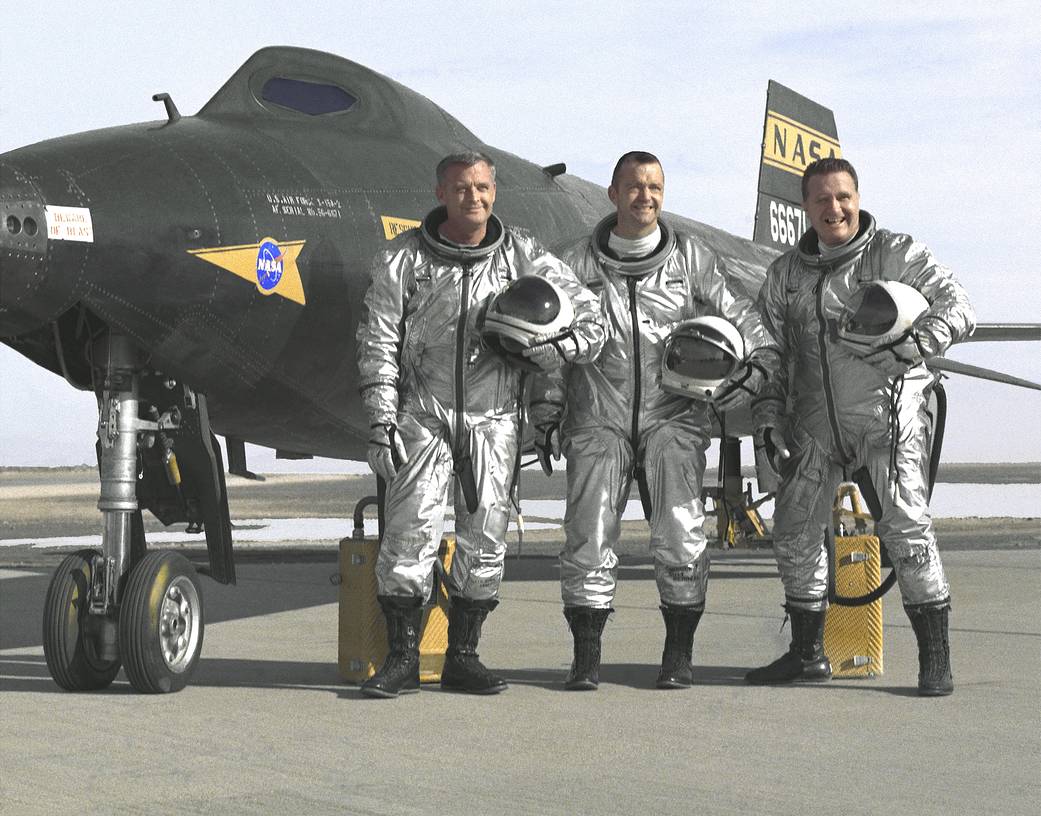Life Support at NASA’s Armstrong Flight Research Center in Edwards, California, was created in the mid 1950s to aid in maintaining the pilot’s flight equipment. Since its creation the life support office has grown into its own branch at the center but instead of focusing on just equipment it now is responsible for aircrew life support safety systems and training.
Life support was not always seen as a necessity. When Neil Armstrong arrived at the center (1955), the pilots were in charge of maintaining their own flight gear including flight suits and survival kits. Pilots wore high school or college football helmets since a standard had not been established for pilot helmets.
Armstrong and National Advisory Committee for Aeronautics (NACA was NASA’s predecessor) pilot Scott Crossfield realized quickly that they did not have the time or resources needed to conduct flight research and maintain their flight equipment. They approached Walter C. Williams, the first site manager of the NACA High-Speed Flight Station (now Armstrong), to explain their concerns. With X-15 research fast approaching, Williams decided there was a need to create a stand-alone life support group.
Williams assigned Roger Barnicki, who focused on the X-15 pilots, as the first chief of life support systems. The group, consisting of three to four people, was in charge of maintaining the flight gear, including the oxygen systems and partial-pressure suits.
As the life support demand grew, so did the group’s responsibilities. With the transition to the X-15 came full-pressure suits, necessary to pilot high-altitude flights (45,000 feet or more). Such suits were worn later by NASA SR-71 and ER-2 pilots. Past center work also included supporting the space shuttle missions and its crews at Edwards from 1981 until the conclusion of the space shuttle program in 2011.
Life support was responsible for crew recovery during shuttle operations at Edwards Air Force Base, including during emergencies. During short-notice shuttle landings, the group operated under the call sign ‘Astrovan.” During scheduled landings at Edwards the life support group was referred to as “Med Ops.” The group’s main duties were to support the crew after landing by accompanying them as they walked around the vehicle in case a crewmember experienced gravity related difficulty. Life support also transported crewmembers to the medical facility and later to lodging as well as supported astronaut family members when present.
The life support group’s research and engineering has led to significant accomplishments in aeronautics. Over the years, they modified oxygen systems for the F-18 Hornets by installing panel mounted oxygen regulators, and upgrading the F-18s from SJU-5/6 to fourth generation SJU-17 (ACES, Advanced Concept Ejection Seats) ejection seats, which are now the standard seat in U.S. fighters.
Recently, they assisted in designing and formulating the budget for the escape system and life support system for NASA’s X-59 Quesst demonstrator. They also designed and modified the oxygen system on SOFIA (Stratospheric Observatory for Infrared Astronomy), a Boeing 747SP jetliner modified to carry a 106-inch diameter telescope.
Ray Kinney is the first chief of the newly formed Armstrong Life Support Branch. The branch has grown from three employees to seventeen and has expanding to two facilities, one at the main center on Edwards Air Force Base and the second at building 703 at Air Force Plant 42 in Palmdale, California. The branch supports and maintains oxygen systems and flight equipment that includes ejection seats, pyrotechnics and parachutes. The also provide aircrew and survival training.






























